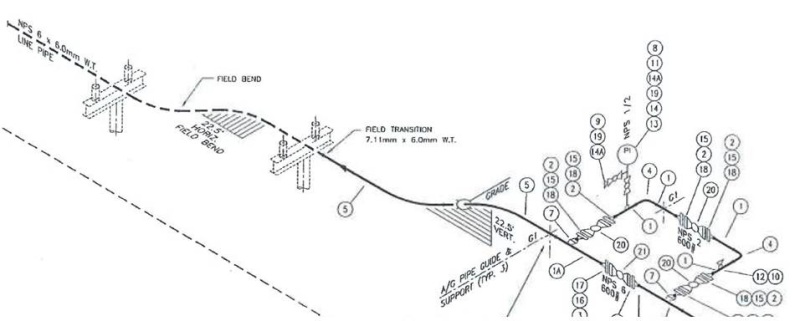An ILI found dents >6% deep near 3 of our underground guides in a double S-bend riser for an NPS 6 pipeline. The dents are located at the 6 o'clock position. Verification digs will be performed in a few months, but we are thinking it is either caused by rocks (not likely to have caused all 3 dents), the support falling off the guide or the support piling has moved.
Has anyone else come across a similar situation with a different cause for the damage? Corrosion does not appear to be a significant factor.
Has anyone else come across a similar situation with a different cause for the damage? Corrosion does not appear to be a significant factor.

